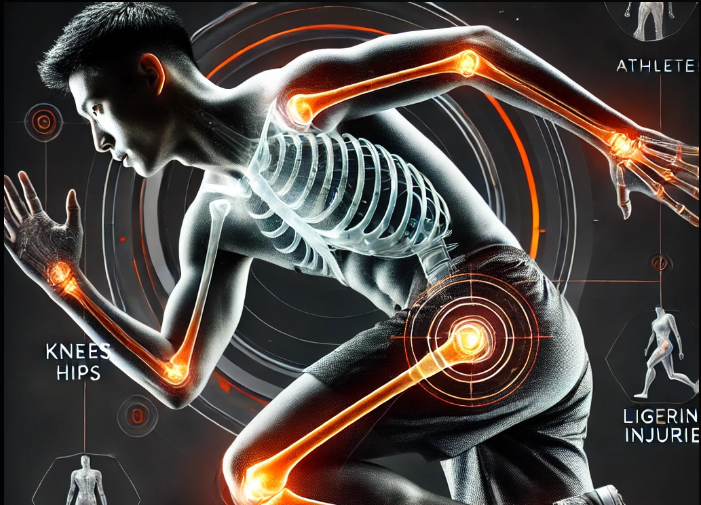Don't Let Past Injuries Haunt Your Present

Old injuries have a way of sticking with us, even when the pain seems to have disappeared. This phenomenon is often referred to as “the body keeps score”—the idea that past traumas, injuries, and imbalances leave their mark on the body. Over time, these unresolved issues can resurface as chronic pain, movement limitations, or even new injuries.
What Does Keeping Score Mean? When the body experiences an injury, it doesn’t always heal perfectly. Even after the pain subsides, the body may adapt in ways that compensate for the damage: Scar Tissue: Forms after injury but can restrict movement and lead to stiffness. Muscle Imbalances: Injured muscles may weaken, forcing other muscles to overcompensate, which can lead to strain or further injury. Altered Movement Patterns: The body may develop habits to avoid pain, such as limping or favoring one side, even after healing. These adaptations can linger long after the injury, affecting how the body moves and functions.Examples of How The Body Keeps Score
-
A Rolled Ankle:
Even years after an ankle sprain, poor mobility in the joint can affect gait and place undue stress on the knees, hips and lower back, causing pain those areas. -
A Shoulder Dislocation:
A disjointed shoulder can create residual weakness in the stabilising muscles, leading to chronic pain or difficulty with overhead movements by the arm. -
Lower Back Strain:
Tightness in the back muscles from an old back strain can result in compensatory patterns, such as overloading the hips or knees, causing further pain.

Why and How Does the Body Keep Score
-
Protective Mechanisms
The body instinctively tries to protect itself after an injury. For example, if moving a certain way caused pain, the brain may "teach" the body to avoid that movement. -
Compensation Patterns
To work around the injured area, other parts of the body may take on extra load. Over time, this can create new imbalances or injuries. For instance, an injury in the knee might cause additional load in the ankles and hips to distribute weight away from the knee, resulting in improper posterior movement and causing pain in the back or neck. -
Unresolved Trauma
In some cases, physical injuries are linked to emotional stress. The body stores this tension, leading to chronic tightness or pain that persists even without an active injury.
How to Prevent Old Injuries From Resurfacing
-
Stay Active Post-Injury
Gradual, guided movement helps restore proper mechanics and prevents compensatory habits. Walks, light jogs, Pilates and even light strength training play a huge role in active recovery. -
Focus on Recovery
Use tools like foam rollers or stretching routines to maintain flexibility and mobility. Releasing tight muscles can help restore mobility and improve blood flow in past injuries. -
Reassess Regularly
Even after recovery, periodic check-ins with a physiotherapist can catch lingering imbalances before they become issues.
Treatments to Solve Injury Scores
-
Manual Therapy
Techniques like myofascial release or joint mobilisation can address scar tissue and restore mobility to injured areas, by using techniques like soft tissues work and muscle-energy techniques to improve circulation and reduce inflammation. -
Neuromuscular Reprogramming
Retrains the brain-muscle connection to ensure proper activation and eliminate compensatory patterns. For example, proper control of the lumbar and core can help to stabilise the hips, preventing compensatory movement in the knees or lower limbs. -
Visceral Therapy
Addresses tension in the body’s internal structures, like the diaphragm or fascia, which can affect posture and movement. Releasing tension in certain areas of the body can help reducing pain and overload from compensating movements. -
Hybrid Pilates
Combines core strengthening and dynamic stretching to correct imbalances and restore natural movement patterns, thus reducing pain and preventing further injury. -
Motion Analysis
The experienced eyes of a clinician and advanced tools can help assess movement inefficiencies caused by old injuries, providing data-driven insights for targeted interventions.
Why These Treatments Matter
1. Prevent Chronic Pain: Addressing old injuries reduces the risk of recurring discomfort and long-term damage by identifying the underlying imbalances or weaknesses that lead to pain. For example, targeting weak core muscles or restricted joint mobility can relieve strain on affected areas, ensuring your body functions more effectively without compensating for past issues.
2. Enhance Mobility: Restoring natural movement ensures your body performs at its most optimal. For instance, improving hip flexibility can alleviate pressure on the knees, while strengthening stabilising muscles can improve overall posture and movement efficiency, allowing you to move freely and without discomfort.
3. Break the Cycle: Targeting root causes eliminates the need for the body to compensate with movements that cause strain in other parts of the body by addressing imbalances directly. For instance, if poor ankle mobility is causing overuse of the hips or back, interventions such as stretching, strengthening, and manual therapy can correct these issues at the source, breaking the chain of compensations.
4. Promote Longevity: Proper recovery not only heals injuries but also prevents future problems from recurring by fostering balanced strength, improved joint health, and efficient movement patterns. This is achieved through progressive exercise programs, regular assessments, and ongoing maintenance techniques like stretching, mobility work, and advanced physiotherapy to keep your body resilient over time.
Take Control of your Body's Story
Your body remembers everything, from minor sprains to major injuries. But you don’t have to let those memories define your future. By addressing the lingering effects of past injuries through advanced recovery techniques, you can break free from pain and move forward stronger, healthier, and more confident. Don’t let old injuries hold you back—start rewriting your body’s story today.
